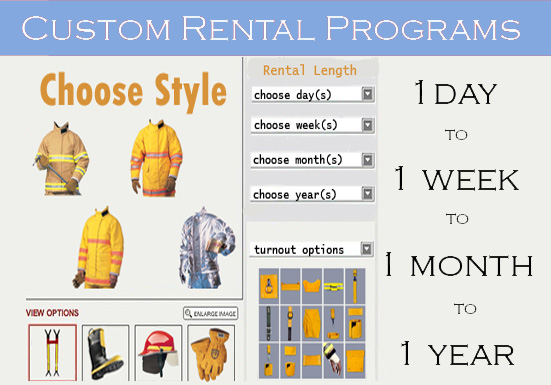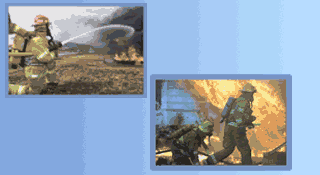|
Old Firefighter Gear Services
1.Bunker Gear Cleaning
2.Bunker Gear Repairing
3.Bunker Gear Inspection
4.Bunker Gear Tracking
5.Rental Bunker Gear
There is a 72 hour turnaround time for cleaning of personal protective equipment.
Cleaning Bunker Gear
Old Firefighter Gear cleans bunker gear with a specialized wet wash method. We use the Check6 Aerospace cleaning agent together with a state of the art industrial-size washer/extractor. This allows us to deep clean each bunker gear garment. The extractor uses an electrically operated valve system, fresh-water-flushing chemical manifold and a six liquid chemical injection point to provide a wash that is compliant with NFPA 1851 guidelines. The washing process has been developed by Old Firefighter Gear over the years and will not void any manufacturers’ guarantees or degrade the integrity of the bunker gear.
Bunker gear should be washed once every six months. It also has to be washed before it can be inspected. Washing bunker gear more often than is necessary may damage its fire protective integrity. Bunker gear also has to be washed before any repairs can be made.
Old Firefighter Gear is able to clean all bunker gear garments that have been exposed to messy contaminants such as crude oil. Simply call Old Firefighter Gear and we will provide you with a free quote.
Bunker Gear Repair
At all times during the repair of any bunker gear, Old Firefighter Gear adheres to NFPA standards. We are able to ensure that repairs to tears, rips, and burn holes, are made professionally, as quickly as possible and while still maintaining the integrity of the firefighting gear. Flame retardant Nomex and Kevlar are used for all repairs, which are both in line with NFPA standards. Repairs, rather than replacement of bunker gear is far more economical and garments leave our repair premises looking as good as if not better than the original.
Our certified staff at Old Firefighter Gear is trained to make repairs and alterations of every type. We receive our training from leading firefighter gear manufacturers and are trained to inspect and repair and carry out the following:
- Velcro enclosures
- Moisture barriers
- Reflective trim and lettering
- Burn holes, rips and tears
- Hardware buttons, snaps zippers, and hooks
- Knee and shoulder pad reinforcements
Bunker Gear Inspection
Routine, Advanced and Complete Liner inspections of firefighter gear have to take place at various stages of its life. NFPA guidelines tell us when these should take place, and who is able to carry out these various inspection processes.
Routine Inspection
The routine inspection is carried out by the firefighter. He/she is the one who wears the bunker gear and is trained to look for problems. These problems include:
- Soiling
- Contamination
- Physical damage
- Damage to trim
- Missing trim
- Missing stitches
- Loss of seam integrity
The firefighter will conduct these inspections regularly in compliance with NFPA regulations.
Advanced Inspection
Once every six months National Fire Protection Agency regulations dictate that an advanced inspection of bunker gear should take place. Advanced inspection must be carried out by personnel in the fire department who are qualified, or a certified third party. Old Firefighter Gear plays a vital role in the advanced inspection process, during which the following procedures must be followed:
- Soiling must be cleaned before inspection.
- Inspection findings documented
- All elements of routine inspection followed.
- Light evaluation of liners
- Evaluation of leakage
- Thermal and physical damage assessment
- Missing hardware assessment
- Test moisture barrier integrity
- Seam integrity assessment
- Material integrity assessment
- Label integrity assessment
- Reflectivity test
- Assessment of closure system
Complete Liner Inspection
A complete liner inspection is required of firefighter gear three years old or older. This complete liner inspection should take place once a year according to NFPA regulations and consist of the following:
- The liner being separated from the main body of the garment
- All hidden sides of the moisture barrier and thermal liner are to be exposed for inspection
- Investigation of liner and testing for moisture and water penetration barrier protection
- Results of testing to be investigated
- Firefighter gear is then either condemned or has to be sewn back together depending on the results of the testing and complete liner inspection
- Firefighter is notified of the results
Rental Bunker Gear
For a free estimate on Bunker Gear Rentals please visit our website
at
www.FireGearRental.com or
give us a ring at 866.370.7800. We can customize your order from single
suit to entire stations from one day to one year.

|

